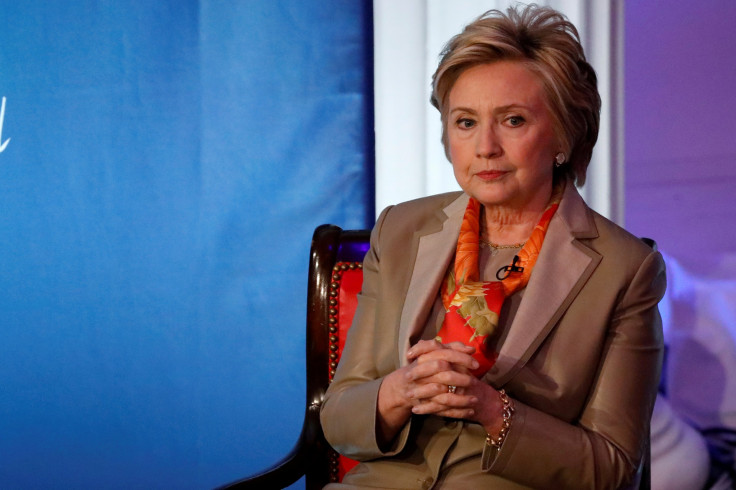Hillary Clinton Flirts With Politics, And Controversy, With Her New Social Welfare Group

Hillary Clinton recently announced that she was setting up a new group called Onward Together, offering few details other than that it will support an array of progressive causes, such as Swing Left, Emerge America, Color of Change, Indivisible and Run for Something. Unlike the Clinton Foundation, which is a charity, Onward Together will operate as a social welfare organization.
But what exactly are social welfare nonprofits, what’s the difference between them and charities and how involved in politics can they get?
As a law professor who formerly served as counsel to the nonpartisan congressional Joint Committee on Taxation, I am interested in the use of nonprofits to serve political purposes. I would like to explain why this kind of organization has become more popular – and more controversial.
We're launching Onward Together to encourage people to get involved, organize, and even run for office. https://t.co/8exooosvZ5
— Hillary Clinton (@HillaryClinton) May 15, 2017
What are social welfare organizations?
Social welfare groups are nonprofits formed to benefit the community in some way.
The largest social welfare groups, like AARP, the National Rifle Association and the local units of the NAACP, are familiar to most Americans. Smaller ones, such as firefighters’ associations, neighborhood civic associations and many PTAs serving specific schools, are more common. According to the National Center for Charitable Statistics, there are more than 83,000 social welfare nonprofits.
Social welfare organizations, sometimes referred to by the part of the tax code regulating them – section 501(_)(4) – have been around since 1913. The IRS and the courts sometimes treat this category as a catchall for nonprofits not made exempt by other parts of the tax code.
Social welfare groups rarely got much attention until the Supreme Court’s Citizens United decision. That 2010 ruling opened the door for 501(_)(4)s to be used as a channel for dark money, or anonymous political contributions, making them a magnet for controversy.
How do they differ from charities?
On the surface, social welfare groups are easily confused with charities, as defined by section 501(_)(3) of the tax code. Both are nonprofits, both are meant to provide a community benefit and both are exempt from paying federal income taxes. Even more confusing: Social welfare organizations and charities are often affiliated and share the same branding.
But there are key operational differences. Social welfare groups are allowed to engage in unlimited lobbying activities – and could spend all their time and money on Capitol Hill or in state houses – while charities face strict limits.
Social welfare groups may also get involved in partisan politics, such as by endorsing candidates, and face fewer compliance burdens and less public scrutiny. Charities, on the other hand, may not engage in any political campaign activity.
The main reason for the tougher standards on charities is the charitable deduction, which lets donors deduct contributions to charities – but not to social welfare groups – from their taxes. This gives the government a stake in ensuring that charitable dollars are used as intended.
That’s why, despite the tougher rules, charitable organizations are by far the most common kind of nonprofit. There are more than 1.2 million of them, dwarfing the number of social welfare groups.
Why does it matter if these groups are too political?
Longstanding IRS guidance says that political activity may not be a social welfare organization’s primary activity. But the agency has not specified where it draws the line.
Nevertheless, the law requires that once an organization becomes mainly political, the IRS should treat it as a “political organization” under section 527 of the tax code – better known as a political action committee or PAC.
Being designated either as a PAC or a social welfare group matters not so much for tax reasons but because Congress requires that gifts to PACs, but not to social welfare groups, be made public. Often, donors prefer to support social welfare groups to hide their giving. The difference in disclosure rules thus creates an incentive to exploit the ambiguity about how much political activity social welfare groups are permitted before they no longer fit in that category.
A prominent example is Crossroads GPS, a conservative group co-founded by Republican operative Karl Rove that has spent heavily on ads attacking Democrats and supporting GOP political candidates. The group ultimately persuaded the IRS in 2015 that it was organized for social welfare and not political purposes, even though critics charged that well over half its activities furthered political ends.
Indeed, determining whether an organization is primarily organized for political or social welfare purposes was at the bottom of the Obama-era allegations that the IRS unfairly subjected conservative groups seeking 501(_)(4) status to excessive scrutiny, which in turn led to calls for impeaching IRS Commissioner John Koskinen and budget cuts for the agency.
What will it take to fix the disclosure problem?
A rule of thumb is that up to 50 percent of a social welfare group’s activity may be political, but this is not a rule of law.
Prior IRS efforts to clarify how it defines political activity through proposed regulations were widely criticized by all sides. Congress shut down that process in 2015.
Yet as I and others have argued, the main problem in this area is not driven by tax law concerns, IRS malfeasance or even vague standards. Rather, it is the need for uniform disclosure rules for political speech.
Maybe if the public decides that both Republicans and Democrats are abusing the social welfare designation, bipartisan legislation will eventually close the dark money loophole. Now that would truly serve the public interest.
Roger Colinvaux, Director, Law and Public Policy Program and Professor of Law, Catholic University of America
This article was originally published on The Conversation. Read the original article.






















